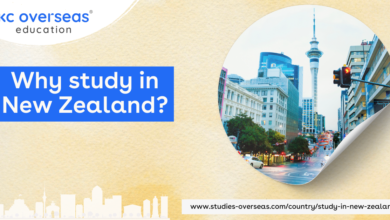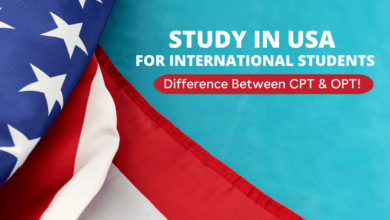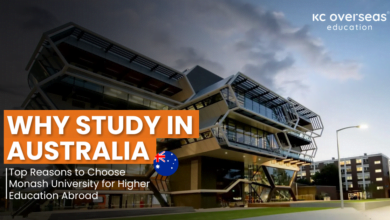
Australia is a well-liked study abroad location for a variety of reasons, including outstanding universities, a solid academic reputation, and plentiful job prospects.
We’ve put together this list of the 10 things every foreign student needs to know before coming to study in Australia, because travelling across the globe is not without its hurdles.
-
Recognize the seasons
Australia, which lies in the southern hemisphere, experiences the seasons in the opposite direction from Europe and North America.
This means that while you might spend July inside, you could spend Christmas Day on the beach. Australia is known for its sunshine, but some parts of the country may get very cold, so do your research before travelling.
-
Taking care of your financial
Australia is not always cheap. Sydney and Melbourne are frequently regarded as two of the most expensive cities in the world. Australia has different costs for life and education. The annual cost of tuition for courses that are taught in a classroom is roughly $30,000. The cost of laboratory-based courses might reach A$40,000 annually.
Travel, lodging, bills, equipment, socialising, food, and drink are all included in the cost of living. In Australia, prices for the most of these vary from region to region. Compared to Hobart, where rent is 25% less than the national average, Sydney’s cost of living can seem astronomically high.
Study in Australia with scholarships are one option to cover some of these expenses. Research the scholarships your university offers by getting in touch with them. To help pay for their higher education, students might combine various funding options. A student loan is an additional choice, as it combines these strategies with family support or employment.
-
Opening a bank account for students
When you get to Australia, one thing to think about doing is opening a local bank account. Good rates, the ability to create an account up to three months before to moving, and the ability to withdraw money without incurring exchange fees are all benefits of Australian bank accounts for students.
It will also be simpler to receive your pay paid into a local account if you decide to work while studying abroad. With four major banks, Australia offers a wide range of alternatives for student bank accounts. Once you’ve decided on a bank, you can select a savings or a transactional account that best suits your needs.
-
Requesting a student visa
All international students must apply for the subclass 500 student visa Australia for studying in Australia. Postgraduate students that are passionate about research are the sole exception. The visa costs A$630 and is valid for up to five years depending on your academic schedule.
If you want to apply for a student visa, you will need:
- Identity cards or a passport
- letter of acceptance from your school
- Proof of sufficient health insurance
- Proof of credentials
- Evidence of money
In addition to this, if you’re going with others, you might also need to demonstrate your proficiency in English and submit details on your partner or dependents.
Using the document checklist tool on the Department of Home Affairs website, you can verify that you have all the required paperwork.
Your visa will be valid while you are a student in Australia, allowing you to go back and forth several times while earning your degree.
Your visa will cover you for a few months after you finish your education. Depending on your credentials, job history, and employment status, you can next apply for a temporary or permanent visa. Graduate students most frequently choose the Temporary Graduate visa (subclass 485), which, depending on the details you supply, can prolong your stay in Australia by anywhere between 18 months and four years.
-
Receiving medical attention
Prior to applying for a student visa, international students must acquire Overseas Student Health Cover (OSHC). This coverage must be in effect at least a week before the start of your course and must be valid the entire time you are studying in Australia.
You must keep a record of the name of the health insurance company, the start and end dates of the policy, and the policy number. This information might be requested by your university or during the visa application process. Before you start the process, make sure you are eligible because some countries are exempt from the OSHC requirements.
-
Engaging in work-study
International students with student visas are permitted to work up to 40 hours per fortnight during term time to help pay for living expenses in Australia. You are free to put in as much time working between classes as you like.
You may want to think about working in Australia full-time once you have finished your courses and secured the appropriate visa. In the last stages of their degrees, universities will help their graduates determine what to do next.
-
College grades
Australia’s higher education institutions rate students’ work using percentages. However, compared to the US and Europe, different letter grades are given.
High Distinction (HD) – A high distinction, which is the academic equivalent of an A+ or first-class degree, is given to students who receive a grade of 83 percent or above on their degree.
Distinction (D) – A distinction, or the equivalent of an A or upper-class second, is given for a score of 73% to 82.99%.
Credit (C) is a grade between 63 and 72.99 percent, which is equivalent to a B or lower-class second.
Pass (P) – Pass is equivalent to a C or third-class certification and covers 50% to 61.99% of the exam.
Failure (F) – A failure is when a student has a grade of less than 50% and is unable to graduate.
-
Touring the nation
There are a few things to keep in mind when vacationing in Australia. It will be less expensive if you pack lightly. Excess luggage fees are frequently assessed on flights. It is best to organise your travel in advance even if there is public transport available all around the nation. Asking for the best is one of the finest methods to locate the hidden jewels nearby.
If you are able to drive and planning to rent or buy a car while visiting Australia, make sure to check the availability of parking at your lodging.
To prevent crocodiles, it is advised to avoid crossing any rivers or creeks. Cars drive on the left side of the road. Drive more slowly at twilight and dawn when it’s harder to see and animals are more prone to cross busy highways.
-
Australians and their cultures
Before you travel to Australia, you might wish to brush up on some of the “Aussie slang” terms. G’day is a common greeting, and people will frequently shorten sentences by adding a “o” or “y” to the end. For instance, “defo” stands for “definitely.”
While studying there, you will have access to cuisine and products from all over the world because there are many different nationalities living there.
Australia’s culture also emphasizes comedy a lot. You’ll discover that Australians frequently make fun of themselves and one another. Dark humour and sarcasm are popular forms of expression for ideas and thoughts.
-
The geography of Australia
Australia is a beautiful destination to explore with its 7.692 million square kilometers and variety of habitats. Depending on where you go, you can find places that are rural, urban, tropical, desert, or subzero.
You might discover some regions that are better for your studies depending on what you want to study. For instance, Queensland would be a fantastic choice for marine scientists as it is close to the Great Barrier Reef. Business students may also profit from Sydney’s professional district.






So unique